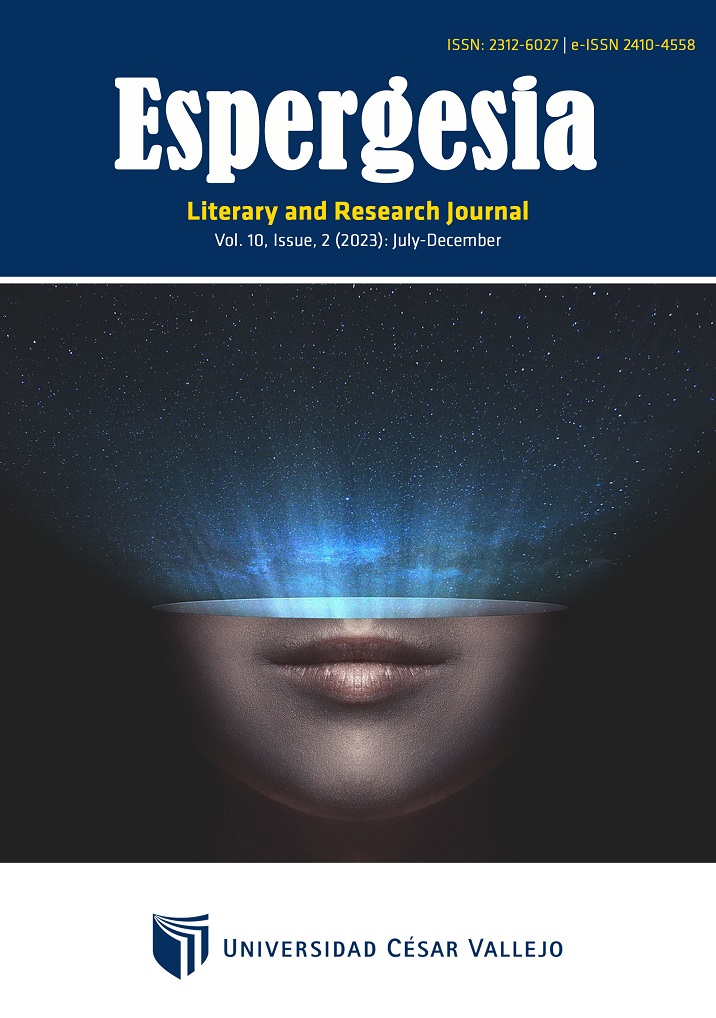The Totorales of Huanchaco: Support of a Millenary Cultural Tradition
DOI:
https://doi.org/10.18050/rev.espergesia.v10i2.2613Abstract
This research focuses on northern Peru, particularly the resort town of Huanchaco, and highlights the traditional use of totora reeds as a millennia-old cultural element of the Chimú civilization. It details the importance of this plant as an essential raw material for the construction of the "caballito de totora," whose cultural symbolism transcends national borders. Additionally, it analyzes the significance of this tradition for the development of handicrafts and tourism in the northern region. The study is supported by a legal framework that includes conventions, resolutions, and ordinances that regulate the management of this crucial natural resource, notably the Ramsar Convention, which focuses on the conservation of wetlands worldwide. From an ethnobotanical perspective, the medicinal and nutritional uses of the totora are systematized. The factors contributing to the vulnerability of these natural ecosystems are presented. Similarly, the process of constructing a "caballito de totora", its dimensions and necessary characteristics for navigation, are explained. Lastly, the study identifies the problems, both of anthropogenic and natural origin, that threaten the long-term survival of this plant, which has grown since immemorial times in the wetlands of northern Peru.
Keywords: Caballito de totora; cultural heritage; urban resilience; cultural tradition; Huanchaco; Chimú culture.
References
Bela, A, & Chifa, C. (2000). Posibilidades de uso medicinal y alimenticio de Typha dominguensis Pers. (Typhaceae), Totora. Universidad del Noroeste.
Carapia-Carapia, L. & Vidal-García, F. (2017). Etnobotánica: el estudio de la relación de las plantas con el hombre. Inecol (El Instituto de Ecología). http://www.inecol.mx/inecol/index.php/es/ct-menu-item-25/ct-menu-item-27/17-ciencia-hoy/373-etnobotanica-el-estudio-de-la-relacion-de-las-plantas-con-el-hombre
Cayetano, Y. P. (2016). El turismo vivencial como alternativa de desarrollo para la asociación de pescadores artesanales de huanchaco – 2016. [Tesis de licenciatura, Universidad Privada del Norte]. http://repositorio.upn.edu.pe/bitstream/handle/11537/10011/Cayetano%20Minchola%20Yvette%20Pamela.pdf?sequence=1
Chauchat, C., & Dricot, J. (1974). Descubrimiento de una tumba en el sitio lítico de la pampa de los fósiles, zona de Cupísnique y sus aplicaciones. Bulletin de l’IFEA.
De Balanzo-Joue, R. (2015). Barcelona, caminando hacia la resiliencia urbana en el barrio de Vallcarca. Hábitat y Sociedad, (8), 75-95. https://doi.org/10.12795/HabitatySociedad.2015.i8.04
Dueñas Porras, Y. (2017). Saber ancestral y conocimiento científico: tensiones e identidades para el caso del oro en Colombia. Tecné Episteme y Didaxis TED, 2(42), 25-42. https://doi.org/10.17227/01203916.6961
Edwards, F. (1965). Aboriginal Watercraft on the Pacigic Coast of South America. University of California Press.
Engel, F. (2015). Catálogo de Tejidos: “Del junco al algodón”. Universidad Nacional Agraria de La Molina.
Gotham, K. F., & Campanella. R. (2011). Coupled vulnerability and resilience: the dynamics of cross-scale interactions in post-Katrina New Orleans. Ecology and Society 16(3), 1-16. http://dx.doi.org/10.5751/ES-04292-160312
Ley N° 28296 (Ley General del Patrimonio Cultural de la Nación). El Peruano. Lima, Perú, 19 de junio de 2003. http://www.cultura.gob.pe/sites/default/files/archivosadjuntos/2016/08/marcolegalokversiondigital.pdf
Ley N° 28611 (Ley General del Ambiente). Ministerio del Ambiente. Lima, Perú, 15 de octubre de 2005. http://www.minam.gob.pe/wp-content/uploads/2013/06/ley-general-del-ambiente.pdf
Matthews, G. V. T. (1993). The Ramsar Convention on Wetlands: its history and development. Ramsar Convention Bureau. http://archive.ramsar.org/pdf/lib/Matthews-history.pdf
Miró Quesada, A. (1964). Costa, sierra y montaña. Talleres Gráficos P. L. Villanueva S.A.
Pulido, V. (s.f). El Balsar de Huanchaco. https://www.ramsar.org/sites/default/files/documents/pdf/lib/hbk4-07cs16.pdf
Quispe del Águila, B.R. (2015). Condiciones turísticas que presenta el distrito de Huanchaco para promover el turismo cultural en el distrito [Tesis de licenciatura, Universidad Nacional de Trujillo]. http://dspace.unitru.edu.pe/bitstream/handle/UNITRU/1802/QUISPE%20DEL%20AGUILA%20BASTY%20RAQUEL%28FILEminimizer%29.pdf?sequence=1&isAllowed=y
Resolución Directoral Nacional N°648/INC. Lima, Perú, 27 de agosto de 2003. http://administrativos.cultura.gob.pe/intranet/dpcn/anexos/8_1.pdf?4467469
Resolución Suprema N° 001-2015-MINAM. El Peruano. Lima, Perú, 23 de enero de 2015. https://busquedas.elperuano.pe/download/url/aprueban-la-estrategia-nacional-de-humedales-1192699-2
Resolución Viceministerial N° 066-2013·VMPCIC·MC. El Peruano. Lima, Perú, 26 de agosto de 2013. http://administrativos.cultura.gob.pe/intranet/dpcn/anexos/132_1.pdf?5630527
Reynosa Navarro, E. (2015). Patrimonio cultural e identidad. Argumentos teóricos. GRIN Verlag GmbH. https://www.grin.com/document/307464
Rostworowski, M. (1981). Recursos naturales renovables y pesca, siglos XVI y XVII. Instituto de Estudios Peruanos.
Rostworowski, M. (1993). Ensayos de Historia Andina. Élites, Etnias, Recursos. (1° ed). Instituto de Estudios Peruanos.
Ruiz, H. (1952). Relación histórica del viaje a los Reynos del Perú y Chile. Real Academia de Ciencias Exactas, Físicas y Naturales.
Unesco. (1972). Convención sobre la protección del patrimonio mundial, cultural y natural. http://www.culturalrights.net/descargas/drets_culturals392.pdf
Walker, B., & Meyers, J. A. (2004). Thresholds in ecological and social–ecological systems: a developing database. Ecology and Society 9(2), 1-16. http://www.ecologyandsociety.org/vol9/iss2/art3/
Downloads
Published
How to Cite
Issue
Section
License
Copyright (c) 2023 Pedro Iberico Portocarrero

This work is licensed under a Creative Commons Attribution 4.0 International License.







